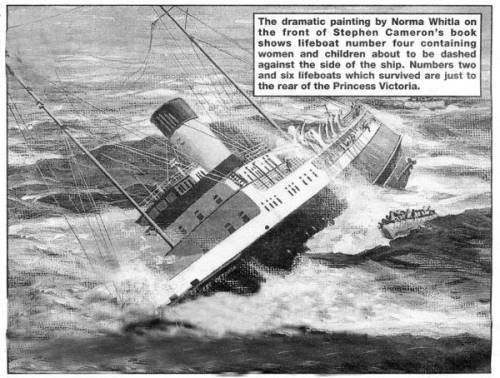#mariitime disaster.
Photo




January 31st marks 70 years since the sinking of MV Princess Victoria with the loss of 134 lives.
Built in 1946 by Wm Denny & Bros, Dumbarton, The Princess Victoria was one of the earliest roll-on, roll-off ferries to go into service.
British Railways used the ferry on the crossing from Stranraer in Scotland to Larne and was the first purpose-built ferry of her kind to operate in British coastal waters.
The short crossing from Scotland was made on a stormy morning. The sinking of Princess Victoria occurred during a severe storm that also caused the North Sea Flood of 1953, claiming 531 fatalities in the UK alone, although this was the worst single incident in that storm.
Sadly, no women or children on board nor the Captain survived with just 44 people escaping the tragic incident that occurred off the Co Down coast, which is often regarded as "a generation's Titanic".
The wreckage can still be found lying at the bottom of the Irish Sea, northeast of the Copeland Islands.
Commemorations are held annually in Larne as many of the victims were from Northern Ireland and many families from the area are said to have been affected by the incident.
There were 128 passengers and 49 crew thought to be onboard, but just 44 – all men, survived. Perhaps most tragically, two lifeboats with survivors inside were destroyed in the storm. One of the lifeboats which was the carrying women and children crashed against the side of the ship, resulting in all of its occupants being thrown into the icy waters with none of them surviving. The other lifeboat was overcome by the waves and flooded resulting in it sinking.
Of the 44 survivors, some 33 were rescued by the Donaghadee Lifeboat Sir Samuel Kelly The final resting place of the Princess Victoria, was just 5 miles North East of Copeland Island, near Donagadee itself. The Sir Samuel Kelly now occupies a plot in the carpark behind Donaghadee harbour, but is fenced off and unfortunately in an increasing state of disrepair. 7 people were rescued by the destroyer HMS Contest, while a further 2 were rescued by the Portpatrick lifeboat Jeannie Spiers which was the last vessel to arrive.
Rescue efforts were hugely hampered by the storm and by the fact that until just a few minutes before her sinking, the Princess Victoria was radioing her position as being off the coast of Scotland. Only once the coast of Northern Ireland was visible to those onboard were rescue vessels sent to the correct area. As soon as it was clear that the vessel was close to Belfast Lough, 4 vessels (the cattleship Lairdsmore, the trawler Eastcotes, the coastal oil tanker Pass of Drumochter, and the coastal cargo ship Orchy) which were sheltering from the storm in Belfast Lough rushed to the vessels aid. Unfortunately, due to the ferocity of the weather, they were unable to get close enough to rescue survivors from the lifeboats without risking damaging the lifeboats themselves. However, they were able to shelter the survivors from the worst of the storm. Importantly, Eastcotes was the first vessel to accurately broadcast the position of the stricken vessel.
Despite being the biggest single loss of life in UK waters during peacetime, the Princess Victoria disaster is almost unknown outside of Scotland and Northern Ireland. There are memorials at Stranraer, Portpatrick, Donaghadee, and Larne however. This is an annual memorial event organised by the Royal Antediluvian Order of Buffaloes MV Princess Victoria Lodge in conjunction with Mid & East Antrim Borough Council.
You can read much more on this all but forgotten tragedy here https://www.midandeastantrim.gov.uk/things-to-do/causeway-coastal-route/mv-princess-victoria
38 notes
·
View notes